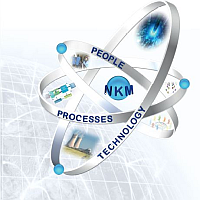Speaker
Ms
Ampika Apichaibukol
(Office of Atoms for Peace)
Description
In order to be a learning organization, Office of Atoms for Peace (OAP) has appointed a knowledge-management (KM) team in an attempt to manage internal knowledge, both tacit knowledge and explicit knowledge, systematically. In principle, the seven steps of knowledge management will be applied for OAP KM, namely;
1. Knowledge identification including the knowledge required of the Regulatory Body.
2. Knowledge Creation and Acquisition including knowledge sharing, transfer and how to maintain knowledge external factors such as a customers& stakeholder, etc.
3. Knowledge Organization based on knowledge structure is needed for a systematic knowledge retention in the future.
4. Knowledge Refinement with ISO standards in document storage.
5. Knowledge access, for example, using information technology management through web board.
6. Knowledge Sharing , OAP staff through numerous methods designed to transfer implicit and tacit knowledge such as formal classroom and on-the-job training, informal Communities of Practice, mentoring.
7. Learning is OAP group continually enhancing their capabilities and making decisions, solving problems and improving the organization.
OAP staff could apply knowledge for organization development and planning for a supporting guideline.
| Country or International Organization | Thailand |
|---|
Author
Ms
Ampika Apichaibukol
(Office of Atoms for Peace)
Co-author
Ms
Kamolporn Pakdee
(Office of Atoms for Peace)

